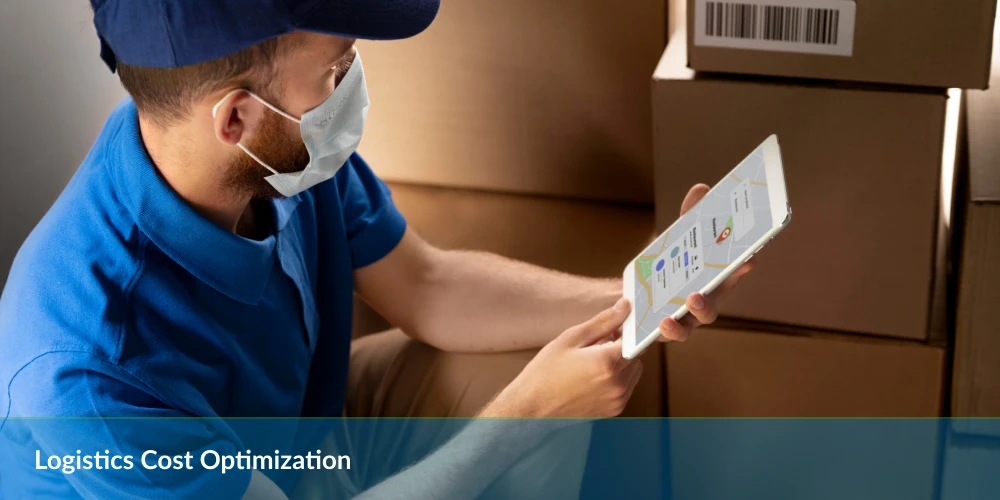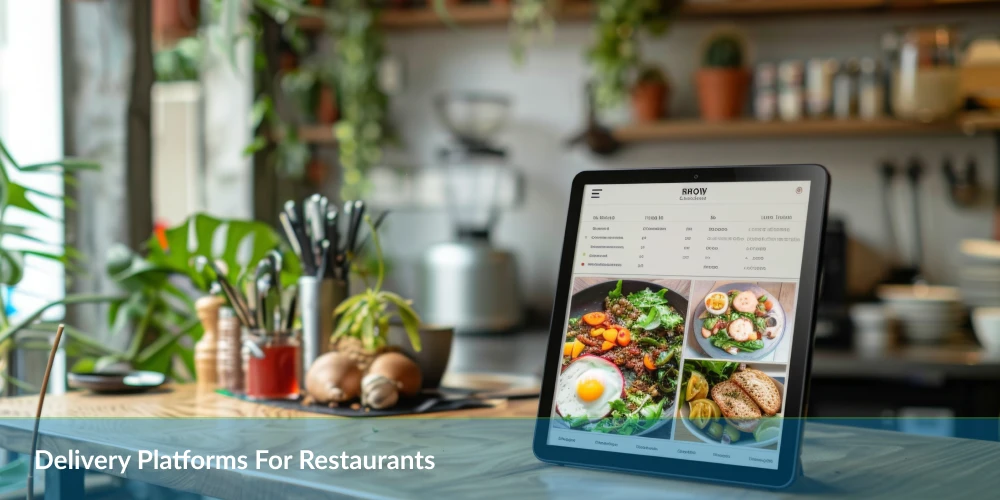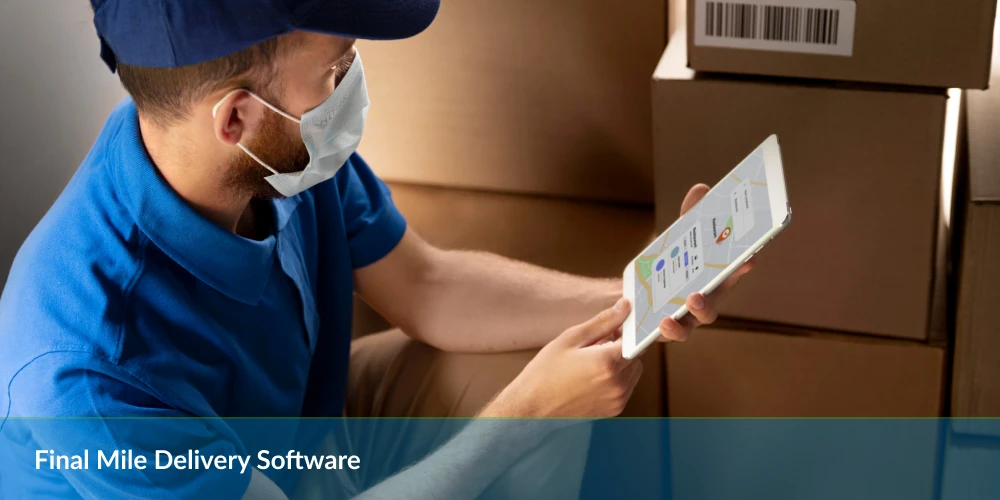Table of Contents
As e-commerce volumes surge and customer expectations tighten, logistics no longer plays a supporting role, in fact, it sits at the core of operational performance. Rapid fulfillment, transparent delivery, and competitive shipping rates now define the winner’s edge in online retail. Yet, when logistics costs spiral out of control, profit margins shrink fast and on-time delivery falters. Both outcomes erode customer trust and leave growth on the table.
Businesses navigating this terrain face mounting transportation rates, inflexible last-mile networks, and data inefficiencies that drive hidden costs. But within these same pain points lie powerful levers for logistics cost optimization, ranging from route planning technologies to network redesign and data-driven carrier selection. The goal? Reduce spend, streamline processes, and elevate the delivery experience without compromise.
Understanding Logistics Cost Optimization
The logistics costs of the Transportation & Logistics market are expected to amount to US$14.39tn trillion in 2029, potentially depicting how much the Transportation & Logistics market can grow.
Source: Statista
Logistics cost optimization involves reducing expenses across supply chain operations while maintaining or improving service quality. With the rise of e-commerce and global trade, businesses are under increasing pressure to deliver faster and cheaper. However, cutting costs blindly can negatively impact customer satisfaction, inventory levels, and overall efficiency. Hence, the goal is not just to cut expenses but to streamline processes and eliminate waste across the logistics chain.
A major contributor to high logistics costs includes inefficient routing, excess inventory, fragmented carrier contracts, and manual operations. These inefficiencies lead to increased fuel consumption, delays, and poor asset utilization. By leveraging real-time data, automation, and predictive analytics, companies can make informed decisions that improve resource allocation, reduce idle time, and optimize transport networks.
Modern logistics cost optimization strategies combine technology with strategic planning. Tools like transportation management systems (TMS), route planning software, and warehouse automation enable businesses to monitor KPIs, negotiate better freight rates, and enhance visibility across the supply chain. The result is a leaner, more agile logistics operation that balances cost with performance.
Dissecting E-Commerce Logistics: Core Functions and Strategic Relevance
Logistics in e-commerce refers to the management of product flow, from procurement of inventory to delivery at the customer’s doorstep. In practice, this means orchestrating multiple systems that span physical movement, data exchange, and service execution. Logistics ensures that products arrive at the right place, in the right quantity, at the right time, while meeting cost and speed expectations shaped by digital commerce.
Within an e-commerce operation, logistics holds a dual purpose. First, it sustains internal efficiency by aligning procurement, inventory, and distribution. Second, it functions as a customer-facing performance engine, directly impacting satisfaction, loyalty, and retention. In this context, logistics ceases to be a back-office function and becomes a visible, measurable driver of commercial outcomes.
Key Components in the E-Commerce Logistics Chain
| Warehousing | E-commerce warehousing involves more than storage. It includes inventory tracking, dynamic slotting, and real-time order processing. Fulfillment centers operate with tight picking, packing, and dispatch deadlines to support next-day or same-day delivery. |
| Transportation | Covers line-haul movement between nodes in the network. E-commerce requires handling high volumes of small-parcel shipments across regional and national routes. Inbound and outbound transportation must be optimized for cost efficiency and lead time. |
| Fulfillment | Goes beyond dispatch by integrating orders across multiple platforms (marketplaces, brand websites), managing cut-off times, and ensuring order accuracy. It links warehousing with transportation and directly impacts delivery speed and error rates. |
| Returns Management | Return logistics can make up to 30% of product volume, depending on the vertical. Efficient reverse logistics processing helps minimize financial loss and maintains customer satisfaction. |
Customer Expectations Anchor Logistics Performance
Fast shipping, real-time tracking, and seamless returns are now baseline expectations, shaped by market leaders like Amazon and Alibaba. Substandard logistics processes will translate immediately into poor delivery scores, rising support tickets, and negative reviews.
Consumer behavior data shows 69% of shoppers are less likely to return after a poor delivery experience, according to a 2022 report by Voxware. Moreover, 14% of customers abandon carts when delivery times are too long or unclear. These numbers tie logistics performance directly to topline revenue.
In practical terms, logistics determines how quickly a retailer turns intent into orders and orders into income. From same-day delivery to effortless returns, every logistical step must be engineered for precision and speed, without inflating costs. Optimizing logistics isn’t a support function; it’s a profit function.
Eliminate Operational Waste: Streamline the Supply Chain for Leaner Logistics
Every inefficiency in a supply chain inflates logistics costs. Begin by mapping every node—procurement, storage, transportation, delivery- to identify slowdowns, bottlenecks, and redundant handoffs. Use process mapping tools such as value stream mapping (VSM) or business process modeling (BPMN) to visualize flows and isolate non-value-adding activities.
Benchmark performance against industry metrics. For example, according to the American Productivity and Quality Center (APQC), leading procurement teams take an average of just five hours to complete a purchase order (PO) cycle, while lower-performing teams take up to two days.. Shortening cycle times through smarter workflows directly reduces carrying costs and speeds revenue realization.
Reduce Redundancies Across Procurement, Production, and Distribution
Procurement systems overloaded with too many vendors, too many SKUs, or inconsistent lead times create unnecessary complexity. Rationalize the supplier base and renegotiate longer-term contracts to stabilize inbound logistics. In production, shift to demand-driven manufacturing models to limit excess output. On the distribution side, consolidate shipments where possible and relocate fulfillment centers closer to major demand zones.
McKinsey reports that companies with simplified supplier networks cut procurement costs by 10–20%. Reducing distribution nodes can shrink delivery miles and fuel consumption, triggering savings across both transportation and labor. Compressing the chain at each level not only saves cost, but it also introduces speed and precision.
Collaborate with Suppliers and Logistics Partners for Better Coordination
High-performing supply chains don’t operate in silos. Share real-time demand forecasts, inventory levels, and shipment data with suppliers and third-party logistics (3PL) providers. This transparency aligns production schedules, avoids stockouts, and minimizes emergency freight. Collaborative planning, forecasting, and replenishment (CPFR) models increase forecast accuracy by up to 45%, according to the Journal of Business Logistics.
Joint KPIs and shared dashboards enforce accountability for delivery times, fill rates, and defect levels across all tiers. When suppliers and logistics partners buy into these metrics, their incentives align with yours, driving systemic cost reductions without sacrificing performance.
Pro Tip: Use value stream mapping and shared KPIs with partners to uncover hidden inefficiencies and drive end-to-end cost savings.
Cut Fuel Burn and Delivery Time with Smart Route Planning
Reducing fuel consumption and delivery times adds measurable savings to the logistics budget. Route optimization software analyzes variable data—driver schedules, delivery windows, road restrictions, and vehicle characteristics—and builds the most efficient delivery sequence. Algorithms assess millions of permutations in seconds.
Integrate Real-Time Traffic and Weather Data
Static maps don’t hold up in real-world logistics. Conditions change fast. Accidents block highways. Storms close roads. Real-time data integration adjusts delivery routes based on what’s happening moment to moment. Google’s Dynamic Routing API and HERE Technologies offer immediate updates on congestion, construction, weather-related closures, and other bottlenecks. Trucks reroute preemptively instead of waiting in idle traffic.
This approach leads to tangible performance gains. According to a 2023 report by Geotab, vehicles using dynamic rerouting based on real-time traffic conditions showed a 17% reduction in idle time and a 22% improvement in on-time delivery rates over routes planned the night before.
Employ Data Analytics to Find Low-Cost Delivery Routes
Analytics digs deeper than maps. Patterns emerge over time, revealing inefficiencies hidden in daily operations. For example, shipments to certain zip codes may consistently cost more due to poor routing or fragmented delivery schedules. Predictive analytics—using historical data—uncovers these trends.
Tools like SAS Analytics, Tableau, and Amazon QuickSight can process delivery logs, cost per stop, driver behavior, and vehicle telemetry. From there, new strategies develop consolidate deliveries on days with favorable traffic flow, redirect specific zones to alternate depots, or adjust delivery windows based on regional congestion profiles.
- Delivery heatmaps identify high-cost zones.
- Time-series models explain how day-of-week influences efficiency.
- Cost-per-mile reports guide for rerouting decisions by profitability.
Adopting this analytical mindset transforms routing from a static process into a dynamic, profit-driven function within the logistics ecosystem.
Transforming the Last Mile: Precision Strategies to Optimize Delivery Efficiency
Cutting the distance between inventory and end customers creates measurable cost reductions. Deploying local delivery hubs or micro-fulfillment centers close to customer concentrations reduces fuel consumption, shortens delivery windows, and decreases reliance on regional carrier hubs. This distributed fulfillment model responds faster to demand surges and peak periods while lowering drop density costs per order.
According to the report, last-mile delivery accounts for over 50% of total logistics costs. Shifting fulfillment closer to the customer compresses this cost center and absorbs demand fluctuations with greater efficiency. Urban micro-fulfillment setups, typically between 5,000 and 25,000 square feet, can process thousands of items per day, significantly reducing lead times and failed delivery attempts.
Offer Multiple Delivery Options and Consolidate Orders
Providing shipping options such as scheduled deliveries, same-day, next-day, or consolidated multi-order drop-offs transforms delivery from a static cost into a controllable variable. Encourage customers to combine orders through incentive structures or subscription models. Batched deliveries reduce the number of trips per household, driving down both carbon footprint and per-order logistics spend.
Analytics from Shopify Plus reveal that 59% of shoppers are willing to wait longer for delivery if they get free shipping. Using this data, structuring incentives for consolidated delivery can align customer expectations with operational efficiency goals.
Monitor, Analyze, and Act on Last-Mile KPIs
You can’t optimize what you don’t measure. Tracking metrics like delivery success rate, average delivery time, cost-per-drop, and customer satisfaction enables fast identification of breakdown points in last-mile performance. When KPIs expose high re-delivery rates or route inefficiencies, adjustments to driver allocation, delivery windows, or route sequencing will restore profitability.
For example, improving the delivery success rate by just 5% potentially saves hundreds of thousands annually in re-delivery fees and returned goods processing, especially at scale. Leveraging dashboards that present real-time data views across regions, carriers, and fulfillment nodes ensures corrective action is consistently data-driven.
- Localize delivery to reduce transportation miles and operating costs
- Promote delivery consolidation to minimize trips and package handling
- Use KPIs as a precision tool to spot inefficiencies and redeploy resources
Every dollar saved on the last mile feeds directly into improved margins and faster customer service. Integrated models that push toward hyperlocal fulfillment with intelligent delivery orchestration deliver far more than packages; they deliver cost control and scalability.
Implement a Transportation Management System (TMS)
TMS platforms consolidate transportation operations under one umbrella. Instead of juggling spreadsheets, emails, and standalone tools, logistics managers use a unified interface to plan routes, assign carriers, schedule pick-ups, and track shipments in real time. This centralization eliminates data silos and streamlines communication with carriers, warehouses, and internal teams. The result: faster response times, fewer errors, and better planning accuracy.
Automate Freight Invoicing and Audit Processes
Manual freight auditing drains both time and money—mistakes in invoicing often go unnoticed or unresolved. TMS software automates invoice matching by cross-referencing shipment data with carrier charges, identifying discrepancies instantly. An average audit automation process can reduce freight bill errors by up to 15%, according to a 2023 Armstrong & Associates survey. By eliminating overcharges and duplicate payments, a robust TMS directly protects the transportation budget.
Gain Visibility and Control Over Transportation Spend
Without real-time visibility, cost leaks remain hidden. A TMS integrates data across carriers, routes, and shipment types to show where money flows and why. With detailed analytical dashboards, managers can identify high-cost lanes, inefficient carriers, and underutilized capacity. For instance, businesses using an enterprise-level TMS report transportation savings between 5% and 10% annually, based on a 2022 report by Gartner. With granular control comes smarter procurement and contract negotiation.
- Review mode-specific performance across air, ground, and ocean freight.
- Pinpoint bottlenecks or delays impacting on-time delivery rates.
- Benchmark carrier rates and evaluate service-level performance.
The right TMS doesn’t just automate—it transforms. Every shipment booked, every invoice processed, and every metric tracked becomes a lever for reducing logistics costs and elevating supply chain agility.
Drive Down Costs by Leveraging 3PL and 4PL Partnerships
Outsourcing logistics functions to third-party (3PL) or fourth-party logistics providers (4PL) can reduce operating costs, but only under specific conditions. E-commerce businesses shipping high volumes across dispersed regions tend to save more when outsourcing transportation or warehousing than managing in-house fleets or facilities. Conversely, direct control offers better margins for companies with compact geographies or specialized delivery requirements.
Break-even cost analysis reveals the threshold. If in-house logistics costs exceed 10-15% of net revenue, outsourcing becomes financially justifiable. Simulation tools and cost-to-serve models allow finance and operations teams to test multiple outsourcing scenarios before shifting key functions to external partners.
Prioritize Providers with Advanced Tech Infrastructure
A 3PL’s ability to deliver cost efficiency hinges on real-time visibility, predictive analytics, and seamless integration. Providers that embed RFID tracking, GPS-enabled fleet management, and AI-powered demand forecasting platforms outperform those using legacy tech stacks.
Negotiate Based on Performance Metrics and Service Value
Work with providers under contracts that align pricing with measurable performance. Flat-rate contracts rarely incentivize logistics partners to innovate or optimize. Performance-based contracts, however, lock in rates only when KPIs such as OTIF (On-Time, In-Full), cost-per-order, or damage rate are met consistently.
Use monthly performance reviews to audit SLA adherence. Tools like scorecards and operational dashboards help identify underperforming links in the chain. Where targets are missed, enforce penalty clauses or re-negotiate service levels. Where partners exceed metrics, use the data to scale up collaboration or transition to more integrated 4PL models.
Strong 3PL and 4PL collaboration doesn’t just reduce direct costs, it frees up internal teams to focus on core competencies like growth and customer experience. Want to know how much of your current logistics spend could be saved with a switch to 3PL or 4PL? Start by mapping your full cost-to-serve per channel, in dollars and in time.
Drive Down Costs with Real-Time Tracking and Visibility Tools
Operational Transparency Strengthens Control
Deploying real-time tracking systems reshapes the way logistics operates. When businesses and customers gain simultaneous access to shipment data, blind spots disappear. Companies can monitor vehicle positions, transit times, temperature levels for sensitive goods, and unexpected route deviations; every data point contributes to actionable visibility.
Proactive Monitoring Prevents Costly Delays
Real-time systems don’t just inform; they anticipate risk. For example, if a delivery route becomes blocked due to weather or traffic patterns, alerts trigger automatically. Dispatchers can reroute freight mid-transit, preventing detention fees, customer dissatisfaction, or Stock Keeping Unit (SKU) outs at retail points.
Integrating predictive Estimated Time of Arrival (ETA) algorithms alongside GPS tracking creates agility in the delivery chain.
Lost Shipments Shrink, Support Costs Follow
Shipment anomalies, say, missed scans, lost pallets, and carrier misroutes, undermine network efficiency fast. With real-time visibility, the frequency of such anomalies falls. Every asset gains a digital identity and journey log, ensuring items are tracked from the warehouse shelf to the customer door. When customers see where their orders are in real time, they make fewer calls to ask questions.
- Fewer calls to support teams lower overhead.
- Shipment verification tools reduce insurance claims and chargebacks.
- Order progress transparency increases trust, lifting repeat purchase rates by as much as 15%.
Visibility isn’t just a dashboard; it’s a cost-saving asset built from sensors, APIs, and operational discipline. In logistics math, fewer unknowns always equal lower expenses.
Data-Driven Decisions: Monitor KPIs and Use Advanced Analytics
Tracking logistics performance through key performance indicators (KPIs) reveals the true cost structure of fulfillment operations. Businesses that continuously monitor and analyze their logistics metrics gain a measurable advantage in cost control and operational agility.
Measure What You Spend and What You Deliver
Cost per order, average delivery time, and return rate directly affect overall profitability. Monitoring these KPIs uncovers where logistics costs accumulate and where efficiencies break down. For instance:
- Cost per order quantifies the end-to-end expense tied to each fulfilled transaction, from warehousing to last-mile delivery.
- Average delivery time reflects speed, which influences customer satisfaction and repeat purchases.
- Return rate links product suitability, packaging, and shipment accuracy to reverse logistics spending.
By benchmarking these metrics, you can detect performance gaps between regions, carriers, or warehouse locations and act quickly to fix them.
Analyze Patterns to Expose Hidden Inefficiencies
When logistics data is aggregated over time, patterns emerge. Volumes may spike in certain zones, specific products might cause disproportionate returns, or one carrier may consistently underperform during high-capacity periods. Identifying such inefficiencies requires more than surface-level dashboards—it requires slicing data by variable: period, SKU, logistics partner, or geographic region.
This analysis often reveals unexpected cost drivers. Repetitive partial shipments, for example, often stem from warehouse picking errors or inventory misalignment, not demand volatility. Uncovering these trends empowers logistics and operations teams to make informed decisions, not assumptions.
Use Predictive Analytics for Proactive Optimization
Once historical performance trends are well understood, predictive analytics can move the operation from reactive correction to proactive planning. Machine learning algorithms can anticipate spikes in order volume, propose optimal labor allocations, and recommend pre-positioning of inventory to reduce delivery windows or avoid peak rate surcharges.
For example, predictive models developed with tools such as Python’s scikit-learn or forecast platforms like Amazon Forecast generate forward-looking insights using past delivery data. When applied across the logistics network, these tools can cut fulfillment costs by predicting order routing, selecting carriers based on expected service levels, and forecasting potential product return rates by customer segment.
The result: a logistics ecosystem that isn’t just lean but anticipates disruptions, minimizes waste, and sharpens its cost-to-serve in every delivery cycle.
Pro Tip: Combine real-time KPI tracking with predictive analytics to shift from reactive fixes to proactive, cost-saving logistics strategies.
Align Omnichannel Logistics to Eliminate Cost Silos
Operating multiple sales channels, like e-commerce platforms, mobile apps, and brick-and-mortar stores, without a centralized order management system, injects avoidable redundancies into logistics costs. With a unified order management system (OMS), businesses process customer orders regardless of the channel from a single interface. This eliminates duplication of order data, reduces errors, and consolidates operations.
A centralized OMS also allows dynamic order routing based on inventory availability, proximity to customer location, and carrier performance, lowering shipping costs and accelerating delivery times. Brands like Target and Walmart execute this model at scale, capturing speed and savings simultaneously.
Centralized Inventory Visibility
Without real-time, cross-channel inventory visibility, businesses overstock one location while stockouts occur elsewhere. That imbalance multiplies warehousing costs and increases split shipments. Fully integrated inventory management systems synchronize data from warehouses, stores, and third-party locations, feeding it directly into sales and fulfillment platforms.
Every omnichannel capability, from OMS unification to store fulfillment, shrinks cost-per-order while expanding service options. Logistics cost optimization under this model isn’t just about trimming fat; it’s about architecting a network built to respond dynamically to where and how customers shop.
Key Takeaways:
- Logistics Efficiency Drives Profitability: Streamlining warehousing, transportation, and fulfillment transforms logistics from a cost center to a strategic advantage.
- Operational Waste = Hidden Cost: Eliminating bottlenecks and redundancies across procurement, production, and distribution improves speed and reduces expenses.
- Real-Time Data & Predictive Analytics Are Game Changers: Monitoring KPIs and applying predictive models enhances agility and proactive decision-making.
- Last-Mile Optimization is Critical: Localized fulfillment, dynamic routing, and consolidated deliveries drastically lower last-mile costs.
- Technology-Led Partnerships Create Value: Leveraging TMS platforms and 3PL/4PL partners equipped with advanced infrastructure leads to sustainable cost reductions.
Wrapping It Up!
Efficiency in logistics doesn’t just protect margins; it builds a strategic edge. For e-commerce businesses operating in fiercely competitive markets, tightly managed logistics operations transform cost centers into levers of profitability and customer retention.
Every decision, from how products are stored to how routes are optimized, shapes the customer experience and impacts long-term growth, not just operational output. The brands that lead in logistics cost optimization surpass competitors by delivering faster, reducing waste, and scaling more predictably.
Logistics optimization isn’t a one-time project. It requires continuous auditing, iterative upgrades, and data-driven refinement. Market dynamics evolve fast. Carrier rate fluctuations, packaging innovations, and technology shifts demand a flexible and responsive logistics playbook.
- Review supply chain KPIs monthly to identify inefficiencies before they scale.
- Rotate technology stacks and 3PL providers if performance or rates stagnate.
- Run quarterly total cost analyses across warehousing, transportation, and fulfillment functions.
When operations, technology, and finance teams work in isolation, cost management falters. By making logistics cost optimization a cross-functional priority, e-commerce companies unlock compounding gains. Data insights lead to smarter freight negotiations. Automation aligns with demand shifts. Inventory capital is freed up for faster-moving SKUs.
Ready to Turn Your Logistics into a Competitive Advantage?
Streamline operations, cut costs, and boost delivery performance with NetworkON’s end-to-end logistics optimization platform. Whether you’re managing warehousing, fulfillment, or transportation, NetworkON empowers your team with real-time visibility, smart routing, and automated workflows tailored for e-commerce growth.
Book a Free Demo Today and See How NetworkON Delivers More with Less.
Frequently Asked Questions
Q1. What is logistics cost optimization in e-commerce?
Logistics cost optimization involves reducing operational expenses across warehousing, transportation, and fulfillment while maintaining delivery speed and customer satisfaction.
Q2. How does route optimization reduce logistics expenses?
Route optimization uses real-time traffic, weather, and delivery data to build efficient routes, reducing fuel consumption, idle time, and delivery delays.
Q3. Why is return management important for cost control?
Returns can make up 30% of e-commerce volume. Efficient reverse logistics minimizes losses, speeds up inventory reintegration, and enhances customer experience.
Q4. What role do TMS and 3PL play in logistics optimization?
A Transportation Management System (TMS) centralizes routing, carrier management, and invoicing. 3PLs provide scalable infrastructure and tech-driven efficiencies, lowering overall logistics costs.





0 Conversations